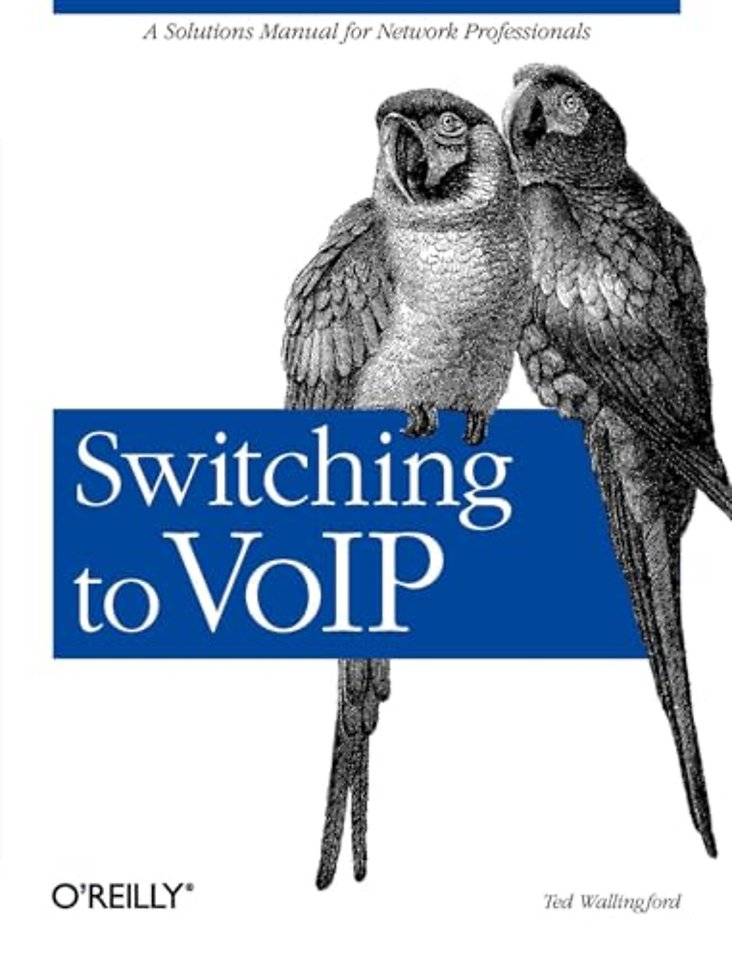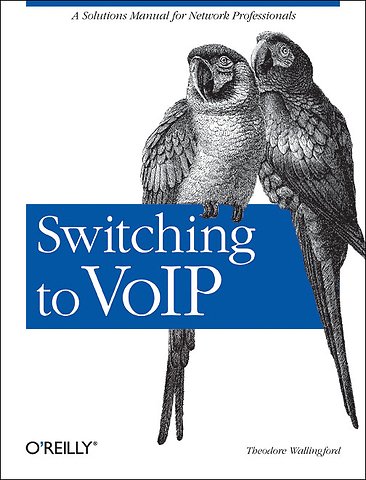Switching to VoIP
A solutions manual for Network Professionals
Samenvatting
More and more businesses today have their receive phone service through Internet instead of local phone company lines. Many businesses are also using their internal local and wide-area network infrastructure to replace legacy enterprise telephone networks. This migration to a single network carrying voice and data is called convergence, and it's revolutionizing the world of telecommunications by slashing costs and empowering users. The technology of families driving this convergence is called VoIP, or Voice over IP.
VoIP has advanced Internet-based telephony a viable solution, piquing the interest of companies small and large. The primary reason for migrating to VoIP is cost, as it equalizes the costs of long distance calls, local calls, and e-mails to fractions of a penny per use. But the real enterprise turn-on is how VoIP empowers businesses to mold and customize telecom and datacom solutions using a single, cohesive networking platform. These business drivers are so compelling that legacy telephony is going the way of the dinosaur, yielding to Voice over IP as the dominant enterprise communications paradigm.
Developed from real-world experience by a senior developer, O'Reilly's Switching to VoIP provides solutions for the most common VoIP migration challenges. So if you're a network professional who is migrating from a traditional telephony system to a modern, feature-rich network, this book is a must-have. You'll discover the strengths and weaknesses of circuit-switched and packet-switched networks, how VoIP systems impact network infrastructure, as well as solutions for common challenges involved with IP voice migrations.
Among the challenges discussed and projects presented:
- building a softPBX
- configuring IP phones
- ensuring quality of service
- scalability
- standards-compliance
- topological considerations
- coordinating a complete system ?switchover?
- migrating applications like voicemail and directory services
- retro-interfacing to traditional telephony
- supporting mobile users
- security and survivability
- dealing with the challenges of NAT
To help you grasp the core principles at work, 'Switching to VoIP' uses a combination of strategy and hands-on 'how-to' that introduce VoIP routers and media gateways, various makes of IP telephone equipment, legacy analog phones, IPTables and Linux firewalls, and the Asterisk open source PBX software by Digium. You'll learn how to build an IP-based or legacy-compatible phone system and voicemail system complete with e-mail integration while becoming familiar with VoIP protocols and devices. 'Switching to VoIP' remains vendor-neutral and advocates standards, not brands.
Some of the standards explored include:
- SIP
- H.323, SCCP, and IAX
- Voice codecs
- 802.3af
- Type of Service, IP precedence, DiffServ, and RSVP
- 802.1a/b/g WLAN
If VoIP has your attention, like so many others, then 'Switching to VoIP' will help you build your own system, install it, and begin making calls. It's the only thing left between you and a modern telecom network.
Specificaties
Inhoudsopgave
Preface
1. Voice and Data: Two Separate Worlds?
The PSTN
Key Systems and PBXs
Limits of Traditional Telephony
VoIP in the Home
VoIP in Business
VoIP's Changing Reputation
Key Issues: Voice and Data: Two Separate Worlds
2. Voice over Data: Many Conversations, One Network
VoIP or IP Telephony
Distributed Versus Mainframe
Key Issues: Voice over Data: Many Conversations, One Network
3. Linux as a PBX
Free Telephony Software
Installing Legacy Interface Cards
Compiling and Installing Asterisk
Monitoring Asterisk
Key Issues: Linux as a PBX
4. Circuit-Switched Telephony
Regulation and Organization of the PSTN
Components of the PSTN
Customer Premises Equipment
Time Division Multiplexing
Point-to-Point Trunking
Legacy Endpoints
Dial-Plan and PBX Design
Key Issues: Circuit-Switched Telephony
5. Enterprise Telephony Applications
Application Terminology
Basic Call Handling
Administrative Applications
Messaging Applications
Advanced Call-Handling Applications
CTI Applications
Key Issues: Telephony Applications
6. Replacing the Voice Circuit with VoIP
The "Dumb" Transport
Voice Channels
Key Issues: Replacing the Voice Circuit with VoIP
7. Replacing Call Signaling with VoIP
VoIP Signaling Protocols
H.323
SIP
IAX
MGCP
Cisco SCCP
Heterogeneous Signaling
Key Issues: Replacing Call Signaling with VoIP
8. VoIP Readiness
Assessing VoIP Readiness
Business Environment
Network Environment
Implementation Plan
Key Issues: VoIP Readiness
9. Quality of Service
QoS Past and Present
Latency, Packet Loss, and Jitter
CoS
802.1q VLAN
Quality of Service
Residential QoS
Voice QoS on Windows
Best Practices for Quality of Service
Key Issues: Quality of Service
10. Security and Monitoring
Security in Traditional Telephony
Security for IP Telephony
Access Control
Software Maintenance and Hardening
Intrusion Prevention and Monitoring
Key Issues: Security and Monitoring
11. Troubleshooting Tools
VoIP Troubleshooting Tools
The Three Things You'll Troubleshoot
SIP Packet Inspection
Interoperability
When, Not if, You Have Problems-
Simulating Media Loads
Key Issues: Troubleshooting Tools
12. PSTN Trunks
Dial-Tone Trunks
Routing PSTN Calls at Connect Points
Timing Trunk Transitions
Key Issues: PSTN Trunks
13. Network Infrastructure for VoIP
Legacy Trunks
VoIP Trunks
WAN Design
Disaster Survivability
Metro-Area Links
Firewall Issues
Peer-by-Peer Codec Selection
Key Issues: Network Infrastructure for VoIP
14. Traditional Apps on the Converged Network
Fax and Modems
Fire and Burglary Systems
Surveillance Systems and Videoconferencing
Voice Mail and IVR
Emergency Dispatch/911
Key Issues: Traditional Apps on the Converged Network
15. What Can Go Wrong?
Common Problem Situations
Key Issues: What Can Go Wrong?
16. VoIP Vendors and Services
Softphones and Instant Messaging Software
Skype
Other Desktop Telephony Software
Developer Tools and SoftPBX Systems
VoIP Service Providers
Telephony Hardware Vendors
17. Asterisk Reference
How Asterisk Is Supported
Asterisk's Configuration Files
Asterisk Dial-Plan
Asterisk Channels
The Asterisk CLI
Integrating Asterisk with Other Software
Key Issues: Asterisk Reference
A. SIP Methods and Responses
B. AGI Commands
C. Asterisk Manager Socket API Syntax
Glossary
Index
Anderen die dit boek kochten, kochten ook
Net verschenen
Rubrieken
- aanbestedingsrecht
- aansprakelijkheids- en verzekeringsrecht
- accountancy
- algemeen juridisch
- arbeidsrecht
- bank- en effectenrecht
- bestuursrecht
- bouwrecht
- burgerlijk recht en procesrecht
- europees-internationaal recht
- fiscaal recht
- gezondheidsrecht
- insolventierecht
- intellectuele eigendom en ict-recht
- management
- mens en maatschappij
- milieu- en omgevingsrecht
- notarieel recht
- ondernemingsrecht
- pensioenrecht
- personen- en familierecht
- sociale zekerheidsrecht
- staatsrecht
- strafrecht en criminologie
- vastgoed- en huurrecht
- vreemdelingenrecht







